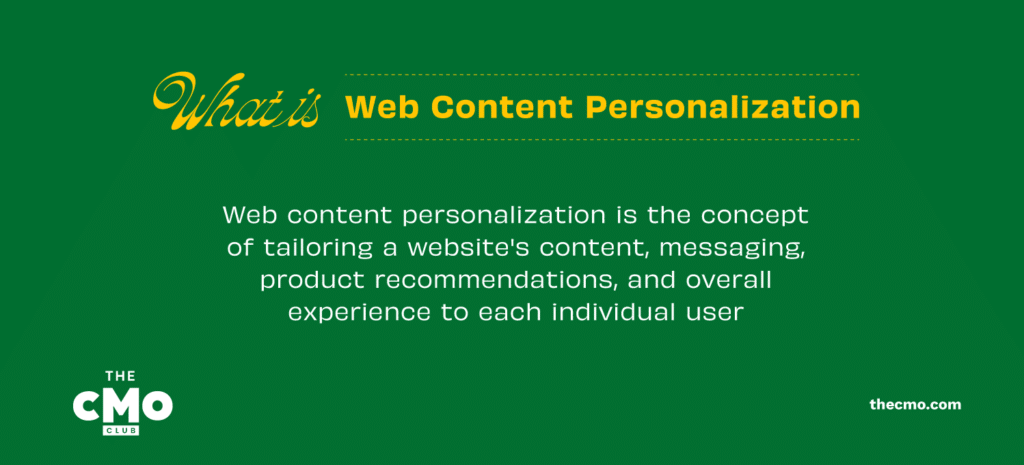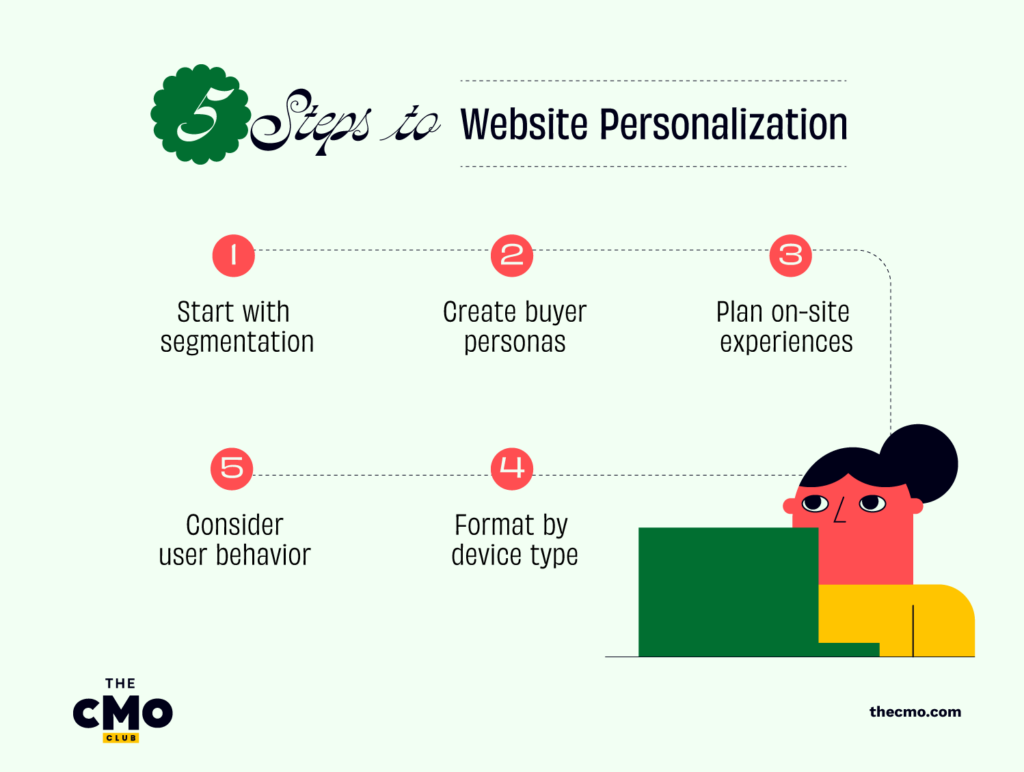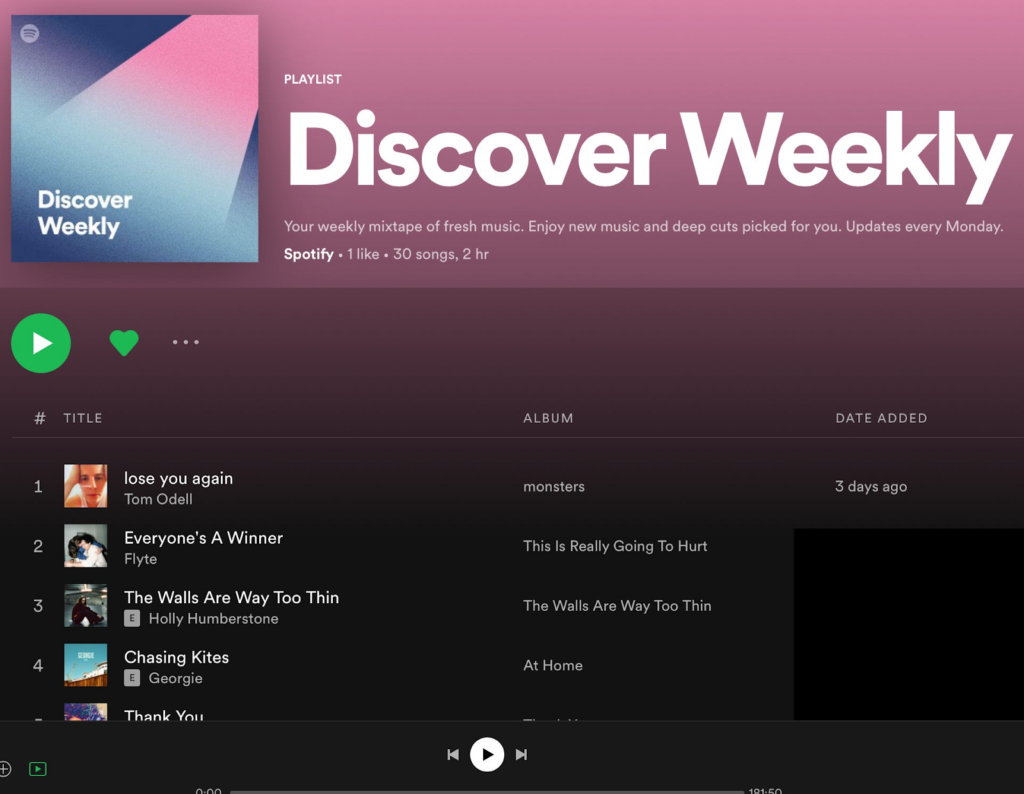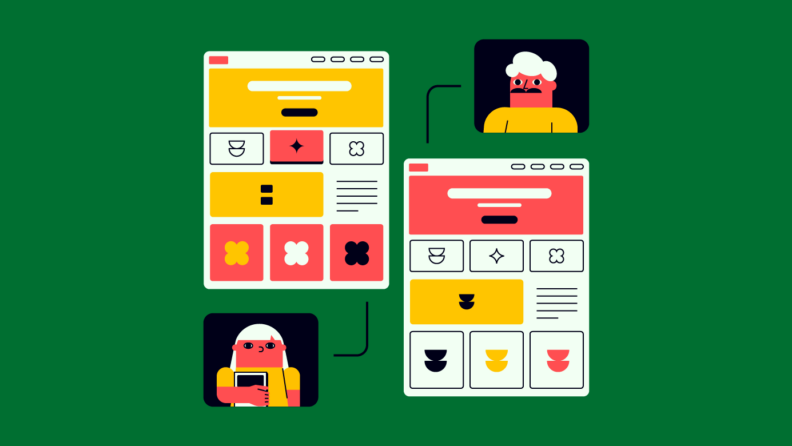If personalization once felt optional, it certainly isn't anymore. The rise of account-based marketing (the strategic targeting of high-value accounts) brought with it an elevated approach; one where target audiences receive custom web content and experiences tailored almost exclusively to them.
To reap the results of efforts like this—I'm talking higher conversion rates, improved customer satisfaction, and accelerated sales cycles—you're in the right place. In this article, I'll not only explain what web content personalization is, but also its benefits, challenges, and how you can implement this particular personalization marketing strategy.
What Is Web Content Personalization?
Web content personalization is the concept of tailoring a website's content, messaging, product recommendations, and overall experience to each individual user. The goal is to make every web visit feel relevant and impactful, matching the right web content to the target audience’s specific needs and pain points. The web user will then see “dynamic” information that is based on their own interests, browsing and purchase history, and location.
Effective personalization (like that in one to one marketing) creates a more intricate relationship between the brand and the customer. Instead of taking a broad approach, businesses can leverage metrics and analytics to determine customer preferences and serve content that resonates best. The result is a personalized website experience that feels like it was designed just for them.

Types Of Web Content Personalization
Dynamic content
Dynamic content refers to elements like text, images, and videos that can change in real-time on a webpage based on the user visiting the page. For example, product recommendations or testimonials can adapt to showcase relevant content to each visitor segment, improving engagement.
Custom messaging
Custom messaging involves tailoring on-site messaging and value propositions to specific user groups. For example, the website could display customized discounts, promotions or even product descriptions when a high-value customer lands on certain pages.
Product recommendations
Product recommendations utilize algorithms to suggest relevant products to customers based on their past purchases, browsing history and what compliments the items already in their cart. The personalized results create a unique experience.
Customized landing pages
Customized landing pages (such as ABM landing pages) involve tailoring the content and layout for different visitor segments based on factors like location, referring site or ad campaign. This allows you to highlight the most relevant products, offers and messaging to effectively convert each audience.
Menu and search personalization
Site menu and search personalization requires adapting navigation menus and search results pages to reflect individual user interests and behavior, enabling site visitors to more easily discover and explore relevant sections of the site. Basically, the menu items and search results change for each visitor. Utilizing helpful ABM statistics as benchmarks can helps refine these personalization tactics
Overlays and pop-ups
Overlays and pop-ups can activate personalized promos, offers, and messaging when visitors meet certain rules-based criteria. This allows you to deliver targeted messages designed to prompt specific desired actions. For example, subscribing to a mailing list or newsletter.
Benefits Of Web Content Personalization
Increased website visit time
Serving each website visitor dynamic content tailored to their interests based on past browsing behavior and purchase history inherently drives more engagement during the website experience.
When visitors are presented with personalized product suggestions and the content truly resonates, they are more likely to actively click and explore the website. This increased time on site is valuable for brands, as extended site engagement provides more opportunities to expose products, offers and brand messaging to influence each customer to convert.
Higher Customer Engagement
Customers feel more valued when a website’s messaging and product positioning seem hand-picked for their needs and interests.
These kinds of personalized on-site digital experiences lead to higher satisfaction and improved brand perception by making customers feel truly understood by the company, which can lead to customer loyalty.
Improved Product Recommendations
Algorithmic product suggestions fueled by individual user data on each visitor’s preferences, past purchases and browsing tendencies leads to more relevant recommendations that better anticipate what the consumer is actually interested in buying.
The customized, dynamic results help visitors discover complementary products they’ll love while exploring personalized recommendation widgets.
Increased Conversions Through Targeted CTAs
Crafting personalized calls-to-action for each visitor group based on factors like past purchases, browsing behavior and interests enables brands to prompt the desired action more effectively.
Targeting each CTA to resonate with where the user is in their journey drives higher conversion rates for things like email sign-ups, offers claimed and sales.
The Challenges of Website Personalization
Lack Of Data
Without sufficient customer data, personalization efforts will not work well, leading to generic web experiences. There are several key data types that are necessary to inform the personalization algorithms:
- Behavioral Data: Details on browsing history, purchases, clicks and site interactions
- Geographic Data: User location details like city, state, country
- Demographic Data: Facts like age, gender, income level
- Psychographic Data: Interests, values, personality and lifestyle traits
- Firmographic Data: Details on the company such as industry, number of employees, tech used
- Technographic Data: Understanding of products/tools used
The solution to this is to prioritize accumulating more first-party data directly from your audience through email sign-ups and surveys and use CRM software to streamline the process.
Lack of Integrated Tech
Another issue is having disjointed martech stacks, content marketing platforms, dashboards and databases that don't easily share data. This can severely limit personalization capabilities when customer insights remain siloed.
The solution to this is to make sure to conduct an audit evaluating how existing platforms and tools integrate to improve data.
Consumer Privacy
To protect user privacy, major players like Google aim to ban the use of external third-party data, while new regulations give consumers more control. This could cut off data sources that have been long relied upon.
The solution to this is to ensure you provide full transparency through privacy policies on what data is being collected and invest in tools that allow consumers to opt in and out of data sharing.

How To Implement A Website Personalization Strategy
1. Start with Segmentation
The first step to implementing a personalization strategy and driving personalized experiences is to categorize your audience into clearly defined audience segments based on common behaviors and attributes.
Go beyond surface-level demographics to categorize users based on deeper psychographics and buying behaviors using data like personal interests, business field/vertical, stage in customer journey and product usage scenarios. This establishes the foundation to then customize messaging and experiences to objectives for each target group, accelerating sales cycles.
To Do This:
- Leverage analytics to uncover key trends in customer attributes & behaviors. This can lead to demographic, behavioral, or geographic segmentation.
- Survey customers directly through quizzes or assessments to capture additional psychographic nuances
- Categorize down to 5-7 coherent segments initially and expand over time
2. Create Buyer Personas
Next, expand on your high-level visitor segments by outlining detailed buyer personas representing your core target groups.
Think beyond demographic basics to paint a holistic, humanized profile through psychographic and behavioral details on common pain points, preferences and priorities. Developing robust personas in this way allows you to empathize with each group to craft website messaging that truly resonates.
To Do This:
- Conduct internal workshops with various customer-facing teams to outline personas
- Directly interview customers that exemplify target groups to add qualitative insights
- Name personas specific roles or names (e.g. Restaurant Manager, Chloe) to humanize
3. Plan On-Site Experiences
Once buyer personas are established, map out what types of personalized on-site experiences align to priority buyer personas to accomplish key business goals like increase conversions or lower bounce rates.
Consider dynamic elements like targeted pop-up offers if abandoned cart rates are high for Ecommerce personas. Allow the personas’ customer journeys to dictate experience optimization opportunities through personalization.
To Do This:
- Study analytics data to pinpoint drop-off points in journeys needing optimization
- A/B test varying on-site experiences for each persona drives future tailoring
4. Format by Device Type
Mobile and desktop visitors have vastly different needs and expectations when it comes to browsing experiences. Make sure your technology can adjust page layouts, types of content displayed and even site speed based on whether the visitor is on desktop, tablet or smartphone. For smaller screens, prioritize readability, minimal effort interactions and simplified journeys.
To Do This:
- Ensure pop-ups and images are resized responsively across devices
- Reduce forms and cut copy down by up to 50% for mobile pages
5. Consider User Behavior
The algorithms powering personalization depend on customer data, but your visitors' needs and behaviors evolve over time. That’s why it’s crucial to continually assess audience data through analytics and primary research to identify any adjustments. Look for changes in buyer journey patterns, pain points or content engagement/preference to stay on top of experience refinement opportunities.
To Do This:
- Set calendar reminds to analyze latest dataset every quarter
- Send periodic customer experience specific surveys to benchmark over time
The Best Personalization Tools
Data Tracking Tools
Robust data tracking paves the way for impactful personalization by compiling crucial visitor information. Some of the best marketing analytics tools and platforms like Google Analytics and Adobe Analytics enable capturing key engagement data such as pages visited, links clicked and items added to cart to better understand audience interests and behavior.
ABM Software
Account-based marketing software and platforms empower personalized outreach to priority accounts by allowing brands to catalog key details on target companies to enable relevant messaging. Tools like Demandbase and 6sense help compile firmographic/technographic intel and contact insights like role and preferences to craft tailored plays for the entire buying committee.
Examples of Great Web Personalization
1. Spotify

Spotify utilizes a highly personalized model for their music streaming platform and thus is a great website personalization example. The home screen adapts to showcase playlists and recommended artists tailored to the individual user’s listening history and favorites, meaning every Spotify experience is curated.
The app also displays recent top artists and a customized "Discover Weekly" playlist that helps users find new relevant music choices similar to songs they already enjoy. This personalized curation keeps users more engaged and we can also see this during the yearly Spotify Wrapped campaign when thousands of users share their listening habit results across social media.
2. Netflix

Netflix is another great example of personalized experiences, as they tailor both the browsing and viewing experience to reflect the unique tastes of users.
For example, all title suggestions and top picks across various categories are informed by previous viewing behavior. Plus every user sees a different visual arrangement of content ordering on their homescreen based on predicted preferences, with the top row designated as “Top Picks For [Name]”.
3. Target

Lastly, Target also is another great example of personalized experiences, as they leverage guest logins to track browsing behavior across sessions which then allows serving up dynamic product recommendations, deals, and featured categories on future visits that will be tailored to those interests.
Their homepage also displays prompts for new items in frequently shopped categories for given user, encouraging further exploration of relevant products.
Making Things Personal
As today’s consumers expect brands to demonstrate a deeper understanding of their priorities and preferences, a tailored web experience provides an edge. The insights uncovered on core audiences and how their needs evolve over time can sharpen future messaging and web experiences that truly resonate.
But that’s just the beginning. The continued impact of artificial intelligence and machine learning will enable brands to deliver even more customized recommendations through automation. It’s a space to keep an eye on.
For more perspectives on marketing personalization, be sure to subscribe to The CMO’s Newsletter to receive the latest insights delivered to your inbox.


